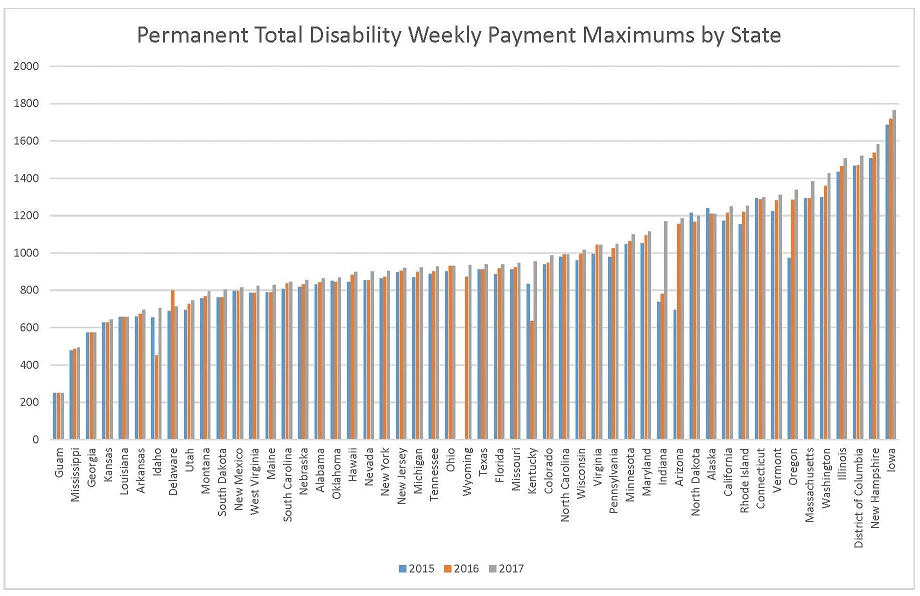GFT stands in support of Bill 200-35 but recommends lifting the proposed compensation of $520 to the 2017 national average of $1011. The purpose of workers’ compensation should be to ensure an injured worker receives a timely and predictable compensation until the worker is able to return to work. In 1988, Guam last updated the maximum cap on workers’ compensation to $250 per week for total permanent disability (e.g. loss of both arms or both legs). The amount of compensation is even less if the loss of limbs is considered partial (e.g. losing one arm or leg).
Based on data from the National Academy of Social Insurance, a change to $520 per week for Total Permanent Disability (TPD) would make Guam surpass the state of Mississippi by $26 per week. All other states and the District of Columbia still have their maximum TPD higher than Guam’s proposed $520 per week. The average TPD per week based on data from 2017 is now $1011. A total of 20 states and territories have their TPD set over a thousand per week with Iowa offering $1765. I commend the efforts to raise the TPD using a model based on inflation; however, a comparison to the other states warrant an increase beyond the proposed $520 per week.
The TPD payable amount provides a maximum, not a minimum. With the average hotel and food industry earning less than $12 per hour, the payout will be around $500 per week or less. Lifting the TPD maximums to the national average of $1011 per week will ensure compensation to those employees who earn beyond $25 an hour. The struggles of not receiving sufficient funds meant filing for bankruptcy or being at the brink of such a financial disaster. Workers’ compensation is supposed to be a safety net to keep an individual from complete ruin. Lifting the TPD cap to $520 per week protects some of the lowest income earners, and lifting the TPD cap to $1011 per week protects the working middle-class employees. An employee who lost a limb should not be undercompensated to a point where they lose their home as well.

